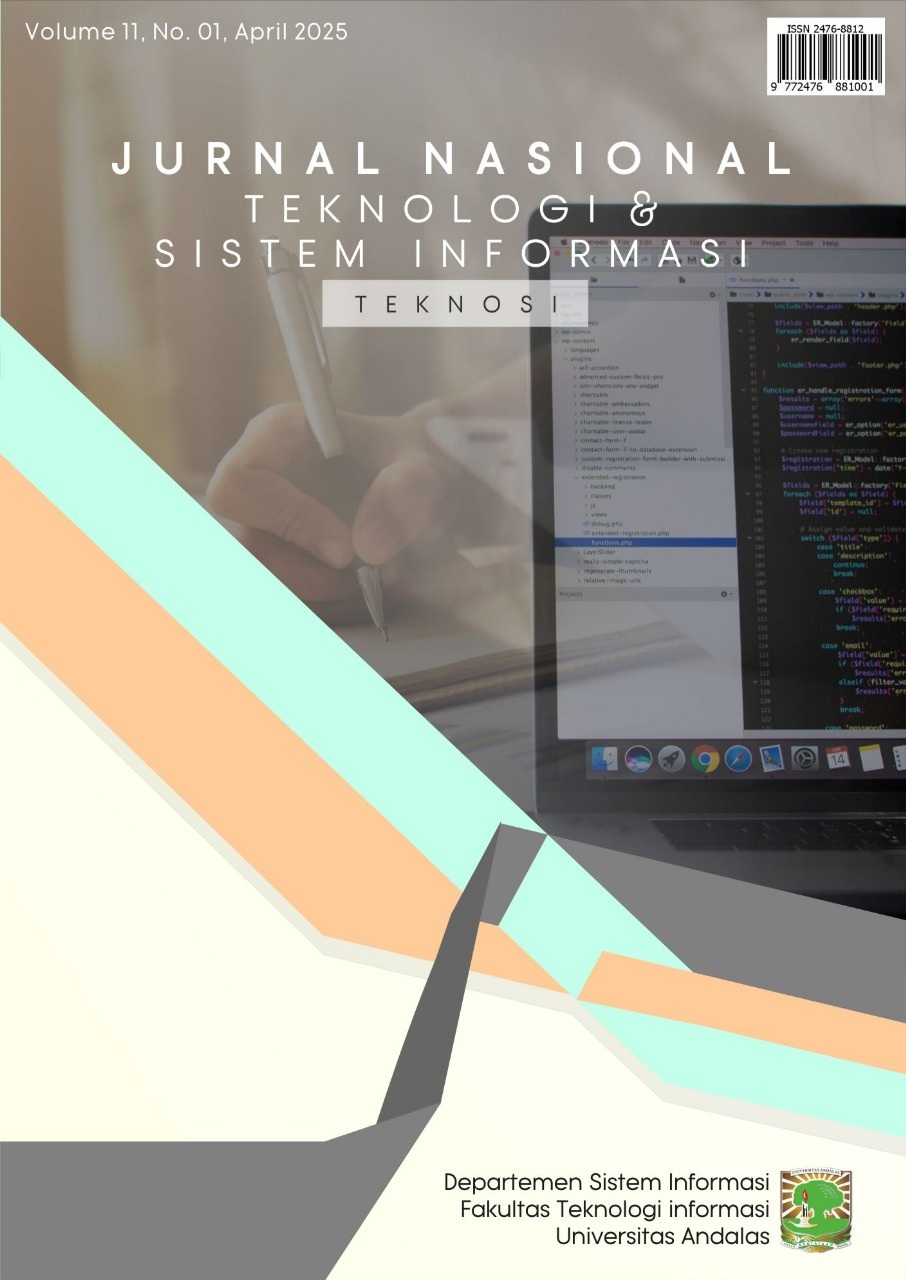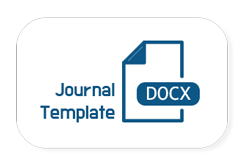S-Know Microlearning: Integral Part of Knowledge Management for Employee Training in the Indonesian Banking Industry
DOI:
https://doi.org/10.25077/TEKNOSI.v11i2.2025.118-127Kata Kunci:
Banking Industry, Human resources, Knowledge management system, microlearning, trainingAbstrak
The lack of integrated and easily accessible knowledge-sharing platforms within organizations, especially in the banking industry, has led to challenges in preserving institutional expertise and supporting effective employee training. S-Know (Smart Knowledge) is a web-based knowledge management system developed to address this issue by facilitating the storage, management, and distribution of organizational information. It offers features such as learning paths, learning modules, quizzes, and discussion forums to promote structured collaboration and self-directed learning among employees. The content is designed using a microlearning approach to ensure better comprehension and relevance to new staff training. The development of S-Know followed the Knowledge Management System Life Cycle (KMSLC), encompassing stages of knowledge capture, system design, implementation, and evaluation, each tailored to align with real organizational needs. Technically, S-Know leverages the Laravel framework for scalability and flexibility, with black box testing used to evaluate system functionality against user requirements. Test results and user interviews confirmed that all core features performed effectively and supported the intended goals. Overall, S-Know shows strong potential as a strategic and adaptive platform for knowledge management that can enhance human resource development and support sustainable organizational knowledge. To further support its growth and long-term value, future development may focus on encouraging greater user participation in knowledge sharing and improving accessibility, especially through integration with mobile platforms.Referensi
M. N. H. Alvianto, N. P. Adam, I. A. Sodik, E. Sediyono, and A. P. Widodo, “Dampak dan faktor kesuksesan penerapan enterprise resource planning terhadap kinerja organisasi: Sistematic literature review,” J. Nas. Teknol. dan Sist. Inf., vol. 7, no. 3, pp. 172–180, Jan. 2022, doi: 10.25077/TEKNOSI.v7i3.2021.172-180.
H. Egard and K. Hansson, “The digital society comes sneaking in. An emerging field and its disabling barriers,” Disabil. & Soc., vol. 38, no. 5, pp. 761–775, 2023.
C. L. Kuruppu, C. S. Kavirathne, and N. Karunarathna, “The impact of training on employee performance in a selected apparel sector organization in Sri Lanka,” Glob. J. Manag. Bus. Res., pp. 13–20, 2021, doi: 10.34257/gjmbravol21is2pg13.
R. F. Iunius, “The Future of Human Capital in Hospitality,” 2025.
L. O. Ayanponle, K. F. Awonuga, O. F. Asuzu, R. E. Daraojimba, O. A. Elufioye, and O. D. Daraojimba, “A review of innovative HR strategies in enhancing workforce efficiency in the US,” Int. J. Sci. Res. Arch., vol. 11, no. 1, pp. 817–827, 2024, doi: 10.30574/ijsra.2024.11.1.0152.
C. Challoumis, “Demystifying the banking system: The importance of the money cycle,” SSRN Electron. J., pp. 1–14, 2024.
G. Anwar and N. N. Abdullah, “The impact of human resource management practice on organizational performance,” Int. J. Eng. Bus. Manag., vol. 5, 2021.
O. Petrychenko, I. Petrichenko, I. Burmaka, and A. Vynohradova, “Changes in modern university: challenges of today and development trends,” Collect. Sci. Work. State Univ. Infrastruct. Technol. Ser. "Transport Syst. Technol., no. 41, pp. 74–83, 2023, doi: 10.32703/2617-9059-2023-41-6.
Z. Xue, N. S. M. Nasir, Y. Cheng, W. Wu, and Y. Cao, “Overcoming resistance to innovation: Strategies and change management,” J. Bus. Innov., vol. 9, no. 1, p. 32, 2024, [Online]. Available: https://www.unimel.edu.my/journal/index.php/JBI/article/view/1789
R. D. Redondo, M. C. Rodríguez, J. L. Escobar, and A. F. Vilas, “Integrating micro-learning content in traditional e-learning platforms,” Multimed. Tools Appl., vol. 80, no. 2, pp. 3121–3151, 2021, doi: 10.1007/s11042-020-09523-z.
M. Tajpour, E. Hosseini, M. Mohammadi, and B. Bahman-Zangi, “The effect of knowledge management on the sustainability of technology-driven businesses in emerging markets: The mediating role of social media,” Sustain., vol. 14, no. 14, p. 8602, 2022, doi: 10.3390/su14148602.
F. Farooq, S. U. Hassan, F. Farooq, F. Farooq, and M. S. K. Tareen, “Bridging the gap: The importance of non-technical skills in cardiology for enhanced patient care and team performance,” Cureus, vol. 16, no. 12, 2024, doi: 10.7759/cureus.75460.
V. Singh, M. P. Sharma, K. Jayapriya, B. K. Kumar, M. Chander, and B. R. Kumar, “Service quality, customer satisfaction and customer loyalty: A comprehensive literature review,” J. Surv. Fish. Sci., vol. 10, no. 4S, pp. 3457–3464, 2023.
D. E. Ogedengbe, J. O. Oladapo, O. A. Elufioye, E. Ejairu, and C. Ezeafulukwe, “Strategic HRM in the logistics and shipping sector: Challenges and opportunities,” Magna Sci. Adv. Res. Rev., vol. 10, no. 1, pp. 294–305, 2024, doi: 10.30574/msarr.2024.10.1.0032.
H. B. Setiawan, R. A. Sukamto, and Y. A. Hambali, “Rancang bangun visual novel game sebagai media pengenalan interview kerja,” Simkom, vol. 10, no. 1, pp. 87–100, 2025, doi: 10.51717/simkom.v10i1.732.
R. Zolea, “A note on capital in a functional analysis of the traditional banking industry,” Rev. Polit. Econ., vol. 37, no. 1, pp. 283–296, 2025, doi: 10.1080/09538259.2023.2272472.
J. Cao, The economics of banking. World Scientific, 2021. doi: 10.4324/9780429356773.
A. Akbar, S. Ahmad, M. Ali, and M. T. Fayyaz, “Employee development and training: How HRM helps in staying competitive in the changing market condition,” Al. Qantara., vol. 10, no. 3, pp. 189–203, 2024.
S. Rajamanickam, R. C. Rus, and M. N. A. Raji, “On-the-job training management through web base application for vocational college students: A qualitative study,” Int. J. Res. Innov. Soc. Sci., vol. IX, no. II, pp. 1209–1220, 2025, doi: 10.47772/ijriss.2025.9020098.
K. A. Kalli, Y. B. Abba, and A. G. Bukar, “An assessment of the effect of training and development on employee performance: A review perspective,” World J. Adv. Res. Rev., vol. 18, no. 2, pp. 258–270, 2023, doi: 10.30574/wjarr.2023.18.2.0748.
N. F. Alias and R. A. Razak, “Exploring the pedagogical aspects of microlearning in educational settings: A systematic literature review,” Malaysian J. Learn. Instr., vol. 20, no. 2, pp. 267–294, 2023, doi: 10.32890/mjli2023.20.2.3.
N. Hilsmann and C. Dodson, “Mobile microlearning in continuing professional development for nursing: A scoping review,” J. Contin. Educ. Nurs., vol. 56, no. 2, pp. 53–62, 2025.
M. F. Amjad, “Gamification of micro-learning: Theoretical insights and practical implementation using cultural knowledge as a content study,” 2025, [Online]. Available: https://www.doria.fi/handle/10024/192791
K. L. Joey and C. O. Graf, “Zurich University of Applied Sciences Master Thesis The Strategic Use of Microlearning as a Training Approach for the Purpose of Workforce Skills Development in Multinational Corporations,” no. August, 2021.
G. C. Sokoh and U. C. Okolie, “Knowledge management and its importance in modern organizations,” J. Public Adm. Financ. Law, vol. 20, no. 20, pp. 283–300, 2021, doi: 10.47743/jopafl-2021-20-19.
M. Rumetna, T. Lina, R. Pakpahan, Y. Ferdinandus, F. Pormes, and J. Lopulalan, “Implementing knowledge management system to improve effectiveness of faculty activities,” in BICED 2020: Proceedings of the 2nd EAI Bukittinggi International Conference on Education, BICED 2020, 14 September, 2020, Bukititinggi, West Sumatera, Indonesia, 2021, p. 206. doi: 10.4108/eai.14-9-2020.2305670.
R. K. Mohammed, N. E. Ahmed, E. M. Aziz, A. Dewi, and others, “Knowledge management plays a crucial role in attaining a competitive advantage,” Al-Idarah J. Kependidikan Islam, vol. 13, no. 2, pp. 113–123, 2023.
E. Kusnadi, Y. Yanitasari, and S. Supriyadi, “Implementation of knowledge management system in cattle farming,” Ilk. J. Ilm., vol. 13, no. 1, pp. 36–44, 2021, doi: 10.33096/ilkom.v13i1.785.36-44.
M. A. Alfarabi and L. A. Abdillah, “Design and construction of knowledge management system for teachers’ teaching materials at SMA 22 Palembang,” Int. J. Softw. Eng. Comput. Sci., vol. 4, no. 3, pp. 1089–1098, 2024, doi: 10.35870/ijsecs.v4i3.3245.
J. Oranga, “Tacit knowledge transfer and sharing: Characteristics and benefits of tacit & explicit knowledge,” J. Account. Res. Util. Financ. Digit. Assets, vol. 2, no. 2, pp. 736–740, 2023, doi: 10.54443/jaruda.v2i2.103.
T. T. Cao, B. P. Le, and N. T. M. Nguyen, “Impacts of high-involvement HRM practices on organizational innovation capability: The mediating mechanism of tacit and explicit knowledge sharing,” Int. J. Innov. Sci., vol. 14, no. 5, pp. 733–749, 2022, doi: 10.1108/IJIS-05-2021-0091.
V. W. Mitchell, W. S. Harvey, and G. Wood, “Where does all the ‘know how’ go? The role of tacit knowledge in research impact,” High. Educ. Res. Dev., vol. 41, no. 5, pp. 1664–1678, 2022, doi: 10.1080/07294360.2021.1937066.
M. X. Richardson, O. Aytar, K. Hess-Wiktor, and S. Wamala-Andersson, “Digital microlearning for training and competency development of older adult care personnel: Mixed methods intervention study to assess needs, effectiveness, and areas of application,” JMIR Med. Educ., vol. 9, no. 1, p. e45177, 2023, doi: 10.2196/45177.
W. Budianto and W. Sardjono, “The implementation of knowledge management system (KMS) evaluation model in improving employee performance: A case study of the state electricity company,” ComTech Comput. Math. Eng. Appl., vol. 13, no. 1, pp. 35–43, 2022, doi: 10.21512/comtech.v13i1.6873.
N. Kannan, “Assessing the effectiveness of microlearning in employee training programs,” Int. J. Train. Dev., vol. 2, no. 1, pp. 1–9, 2024, [Online]. Available: https://iaeme.com/Home/journal/IJTD
L. S. Riza, M. R. Nugraha, H. Siregar, and A. P. Wibawa, “Pengembangan Media Pembelajaran Berbasis Event Logging Systems Untuk Analisis Perilaku Belajar Siswa,” J. Ilmu Pendidik., vol. 22, no. 2.
G. A. Buntoro, I. P. Astuti, and W. Widhianingrum, “Web-based knowledge management system design on micro, small medium enterprise (MSMEs) reog Ponorogo,” in 4th Borobudur International Symposium on Science and Technology 2022 (BIS-STE 2022), 2023, pp. 696–705. doi: 10.2991/978-94-6463-284-2_74.
I. Oyeyipo et al., “Investigating the effectiveness of microlearning approaches in corporate training programs for skill enhancement,” Gulf J. Adv. Bus. Res., vol. 2, no. 6, pp. 493–505, 2024.
A. Seppewali, F. F. Dwiputra, and W. H. Mulyo, “Implementasi aplikasi mobile knowledge management system pada PT. Pesona Edukasi menggunakan pendekatan rapid application development,” Pixel J. Ilm. Komput. Graf., vol. 17, no. 1, pp. 134–148, 2024, doi: 10.51903/pixel.v17i1.1990.
Unduhan
Telah diserahkan
Diterima
Diterbitkan
Cara Mengutip
Terbitan
Bagian
Lisensi
Hak Cipta (c) 2025 Jurnal Nasional Teknologi dan Sistem Informasi

Artikel ini berlisensiCreative Commons Attribution-ShareAlike 4.0 International License.
Hak cipta untuk artikel ini ditransfer ke Jurnal Nasional Teknologi dan Sistem Informasi (TEKNOSI) jika dan ketika artikel diterima untuk publikasi. Yang bertanda tangan di bawah ini dengan ini mentransfer setiap dan semua hak di dalam dan ke kertas termasuk tanpa batasan semua hak cipta untuk TEKNOSI. Yang bertanda tangan di bawah ini dengan ini menyatakan dan menjamin bahwa makalah tersebut asli dan bahwa ia adalah pembuat makalah, kecuali untuk bahan yang secara jelas diidentifikasi sebagai sumber aslinya, dengan pemberitahuan izin dari pemilik hak cipta jika diperlukan. Yang bertanda tangan di bawah ini menyatakan bahwa ia memiliki kekuatan dan wewenang untuk membuat dan melaksanakan penugasan ini.
Kami menyatakan bahwa:
- Makalah ini belum diterbitkan dalam bentuk yang sama di tempat lain.
- Makalah ini tidak akan dikirimkan di tempat lain untuk publikasi sebelum penerimaan/penolakan oleh Jurnal ini
- Izin hak cipta diperoleh untuk materi yang diterbitkan di tempat lain dan yang memerlukan izin ini untuk reproduksi.
Selanjutnya, Saya/kami dengan ini mentransfer hak publikasi yang tidak terbatas dari makalah yang disebutkan di atas secara keseluruhan kepada TEKNOSI. Transfer hak cipta mencakup hak untuk mereproduksi dan mendistribusikan artikel, termasuk cetak ulang, terjemahan, reproduksi foto, mikroform, bentuk elektronik (offline, online) atau reproduksi lain yang serupa.
Penulis yang sesuai menandatangani dan menerima tanggung jawab untuk merilis materi ini atas nama setiap dan semua penulis bersama. Perjanjian ini harus ditandatangani oleh setidaknya salah satu penulis yang telah memperoleh persetujuan dari rekan penulis jika berlaku. Setelah pengajuan perjanjian ini ditandatangani oleh penulis yang sesuai, perubahan kepengarangan atau dalam urutan penulis yang tercantum tidak akan diterima.
Hak / Syarat dan Ketentuan yang dipertahankan :
- Penulis memiliki semua hak kepemilikan dalam setiap proses, prosedur, atau artikel manufaktur yang dijelaskan dalam Karya ini.
- Penulis dapat mereproduksi atau mengotorisasi orang lain untuk mereproduksi karya ini atau karya turunannya untuk penggunaan pribadi penulis atau untuk penggunaan perusahaan, dengan ketentuan bahwa sumber dan menyatakan hak cipta dimiliki TEKNOSI, salinan tidak digunakan dengan cara apa pun yang menyiratkan pengesahan TEKNOSI atas suatu produk atau layanan dari pihak mana pun, dan salinannya sendiri tidak ditawarkan untuk dijual.
- Meskipun penulis diizinkan untuk menggunakan kembali semua atau sebagian dari karya ini dalam karya lain, ini tidak termasuk mengabulkan permintaan pihak ketiga untuk mencetak ulang, menerbitkan ulang, atau jenis penggunaan ulang lainnya.














